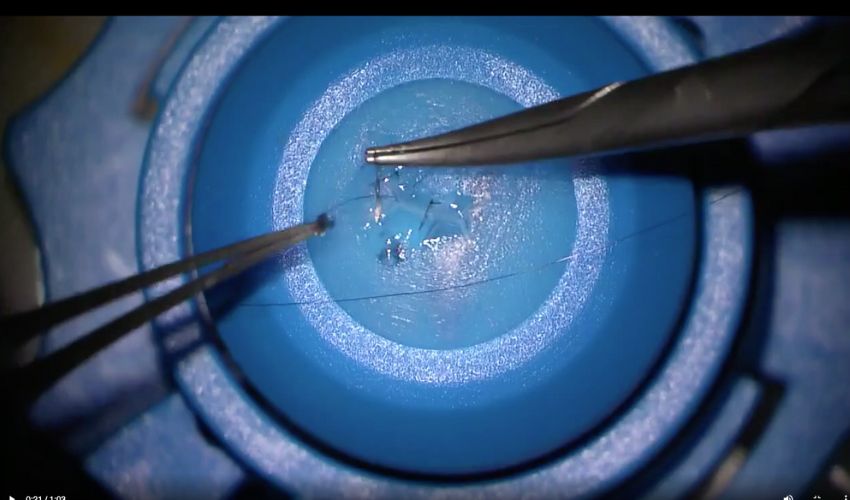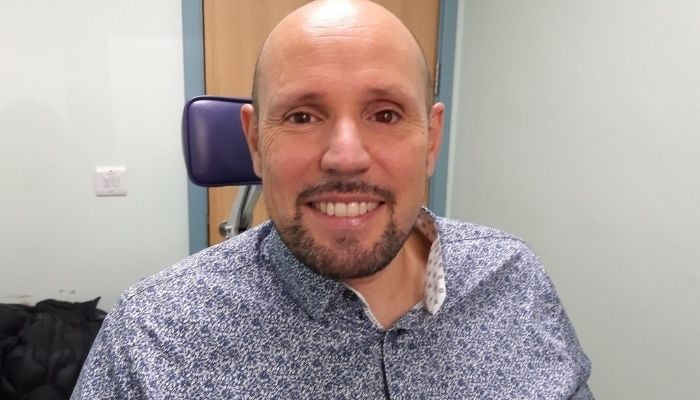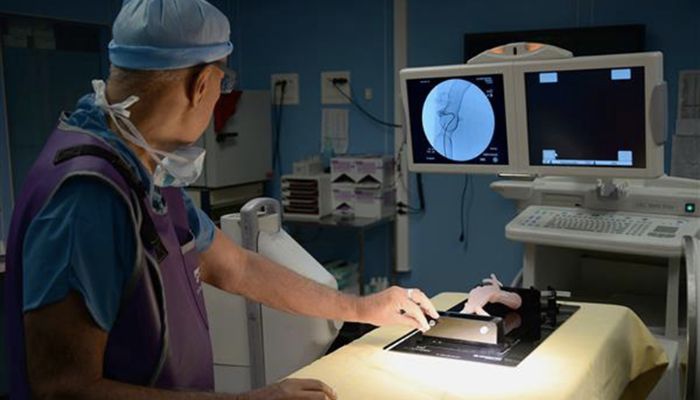3D Printing Used For Eye Trauma Simulation Models At London Hospital

3D printing often proves useful for surgical training and modeling of medical conditions, particularly those which present complex cases and are difficult to train outside of the operating theater. This includes eye surgery; in this case, specifically surgery to rectify trauma to the cornea (the transparent part of the eye which covers the iris and the pupil). Researchers at King’s College Hospital in the UK have developed a trauma simulation model using 3D printing and their data suggests it is a useful option for improving the confidence of surgeons and clinical fellows regarding surgical treatment of eye trauma.
The cornea models were designed using Fusion 360 CAD software and were based on real cases seen in the aforementioned hospital. They used the Stratasys J850 to print the models in a photopolymer material and then conducted a simulation course using the models with a group of 14 ophthalmologists and 5 clinical fellows. The post-training questionnaire showed that all participants felt more confident with the assessment and suturing process than before. Importantly, these 3D models are therefore an alternative to the current options of animal or cadaver eyes for surgical training.

Aside from surgical models, 3D printing has been used in the past to create prosthetic eyes, such as this for patient Steve Verzey in November 2021. (Photo credit: Moorfields Eye Hospital)
According to the researchers, the use of 3D printing offers a range of benefits including shorter lead time and rapid prototyping. In terms of a hospital setting, the models can be mass produced and used for skills training, allowing doctors valuable time to hone their skills outside of an operating theater (where naturally the stakes are far higher). While training on real patients is of course an essential part of picking up the technical skills required, practice on models is a way of honing skills in a low-stress environment without requiring the supervision of senior staff.
Of course, this does not represent the first case of 3D printing being used in a hospital context to aid learning: in 2021, we reported on Seattle Childrens’ Hospital using Stratasys technology to create anatomical models for surgical preparation. 3D printing has also been used for the treatments themselves. Recently, surgeons at IUCT Oncopole (University Cancer Institute of Toulouse) bioprinted a nose graft onto a patient’s forearm, where it was grown before being implanted onto her face in reconstructive surgery. This Kings College Hospital trauma research was published in Eye, the official journal of The Royal College of Ophthalmologists. You can find the link to the full study HERE.

3D printing can make surgical models of organs. (Photo credit: Springwise/Biomedex)
What do you think of this eye trauma modeling using 3D printing? Let us know in a comment below or on our Linkedin, Facebook, and Twitter pages! Don’t forget to sign up for our free weekly Newsletter here, the latest 3D printing news straight to your inbox! You can also find all our videos on our YouTube channel.






